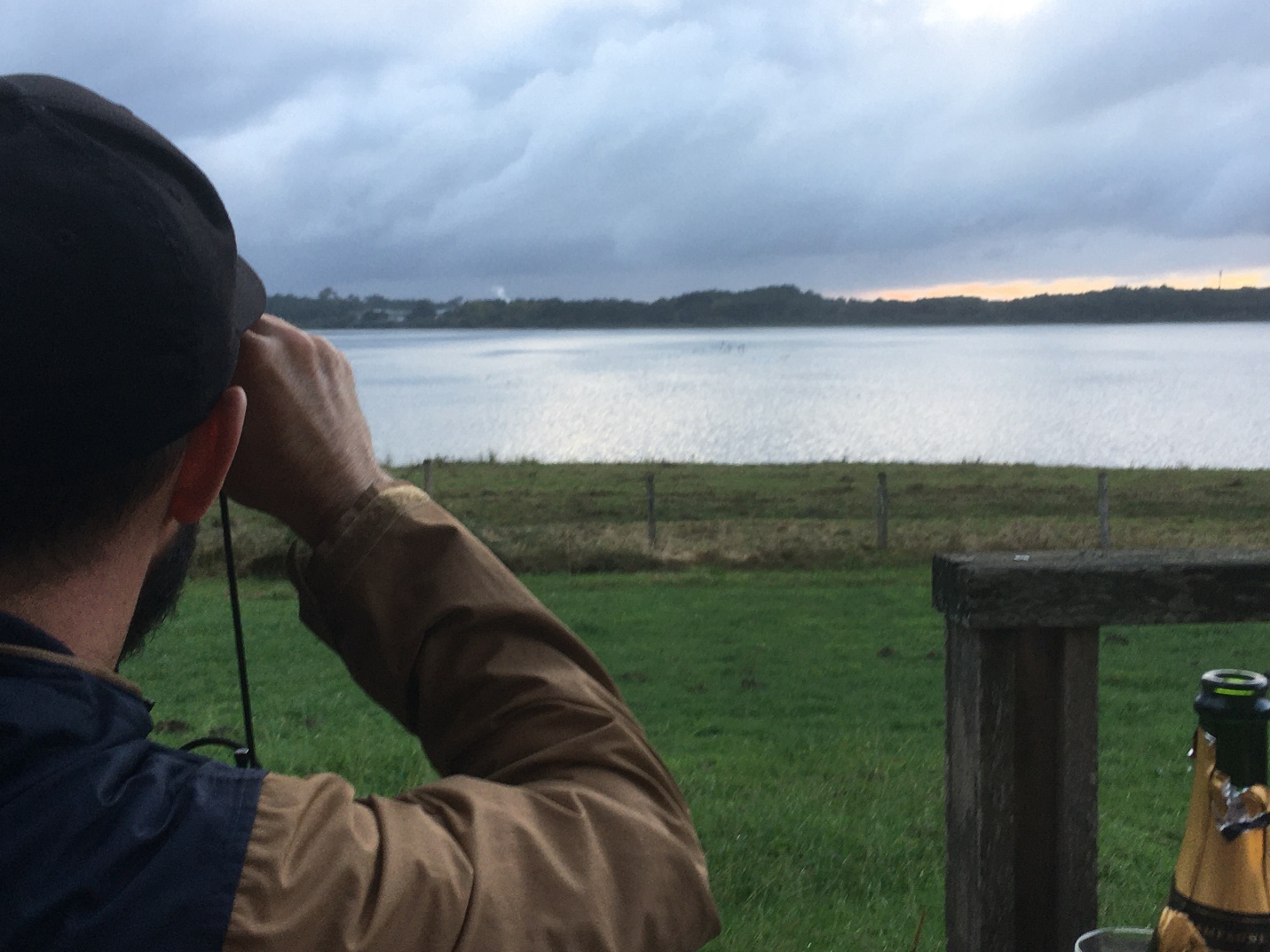Loud knocking on the door of the farm house on the Marais d’Orx, a lake near Bayonne in southwest France. Paul comes to warn us. It has stopped raining, the heavy clouds of that day have broken up and, unexpectedly, hundreds of spoonbills enter the airspace above the Maraix d’Orx, sometimes beautifully illuminated by the afternoon sun. A great reason to be rudely woken up from the siesta!
Quickly on our way to the well-known spots on the southern edge of the lake, where the spoonbills usually come to ground. They drink, clean and sleep there, some forage, but most stay less than a day before moving further south. We are here on the border with the Basque Country, here spoonbills begin their crossing of the Cantabrian Mountains and the Spanish plateau. Many will only stop again in southern Spain.
In the decades that I have been involved in bird migration, I have regarded the long flight journeys of migratory birds as ‘arduous’, ‘physically challenging’, ‘exhausting’ and ‘risky’. I wasn’t the only one, that’s how bird migration was (and is) commonly talked about by biologists and the professional story makers. In Marais d’Orx it would therefore be a decision (whether to leave or not, and with whom) about life and death.
Never before had I thought of migration as ‘exciting’, ‘fun’ or even ‘enjoyable’, migration as enjoyable and exciting journeys of discovery, journeys that you could simply be really looking forward to (even though, as we know, they can end badly). Yet “excitement” was exactly what I felt watching the flight-dancing groups of spoonbills passing by in the Marais d’Orx on the afternoon of September 29, 2021. Their enthusiasm was palpable.
This also applied to the group that landed at sunset on the west side of the lake, directly opposite our accommodation in a converted farmhouse. That group even included spoonbill ‘Petra’, which had been fitted with a transmitter as a chick by Tamar Lok a few months earlier near Amsterdam. Petra stayed that night in Marais d’Orx. She left at dawn. We were able to wave her goodbye, because we arrived just when her group decided to leave before sunrise.
For the first time in all those years I thought: “How wonderful it must be for a young spoonbill to make such a migration for the first time, full of expectations, and in good company with experienced peers who know what they are doing”. How nice to feel excited about migration!

Florent Lagarde, who works at the Réserve Naturelle de la Marais d’Orx, looks at a group of spoonbills migrating southwards on September 29, 2021, visible in this photo as a white cloud against the green (right next to Florent’s right hand). - Photo: Theunis Piersma
I recently had the honor of being able to talk about bird migration at the migratory bird symposium organized by the Oosterschelde National Park on Neeltje Jans. Among other things, I talked about our (re)discovery of the ‘oeken’, the sound that spoonbills seem to make, especially before leaving for longer migrations. Among the listeners was Titia Kroon, volunteer at the Schouwen-Duiveland Nature and Bird Watch. Titia came to me during the break with a wonderful story: she had already discovered 20 years ago how positively excited migrating spoonbills sound! Here she tells it herself:
“About 20 years ago I walked in the afternoon on the beach from Meijendel (near Wassenaar) to Scheveningen. It was a beautiful late summer day in September. I heard birdsong behind me and I looked back. At less than 100 m altitude I saw a group of about 20 to 25 spoonbills flying south along the coast. At that time you didn’t see as many spoonbills as you do now, so that was very special and the image is still burned into my retina. Also etched in my memory is the sound they made: they shouted continuously to each other, excited like a class on a school trip. I heard lower and higher sounds, which may have been made by young and older birds. I could just feel their excitement! They must have just started their great migration. I watched them until they were out of sight.”
Like this! Titia’s story supplements our now published observations with the observation that spoonbills continue to talk to each other even while flying. But what impresses me most now is her interpretation of what she experienced on the beach near The Hague: spoonbills excited about migration.

